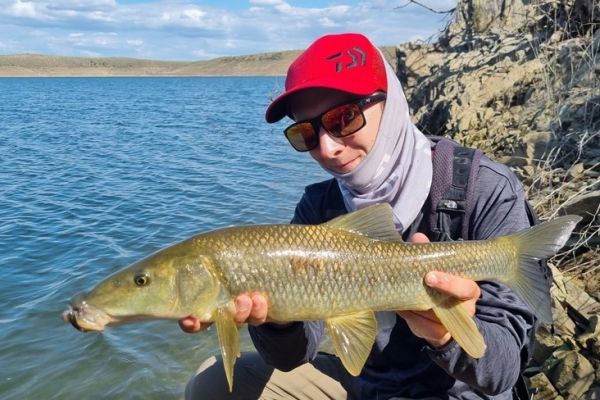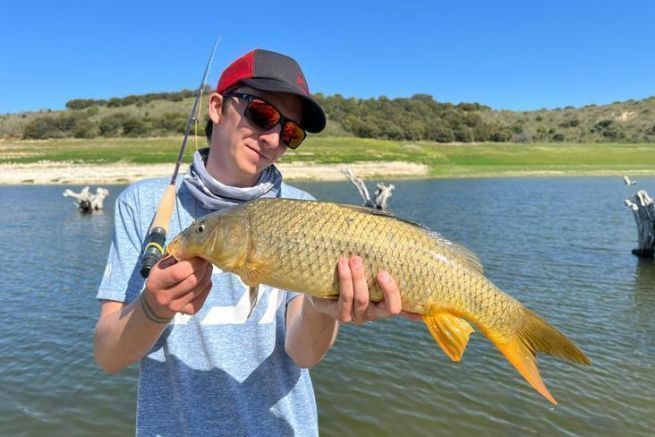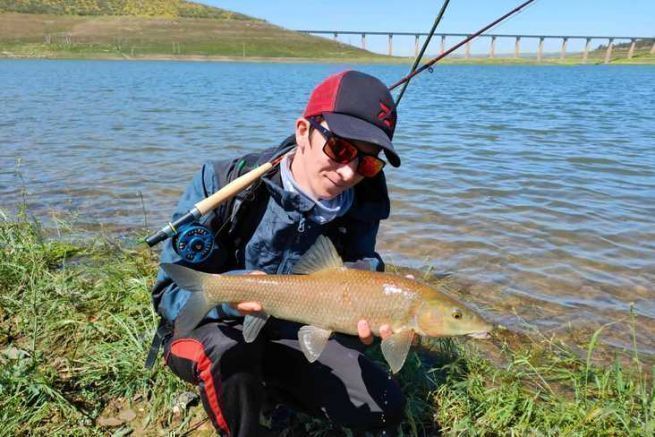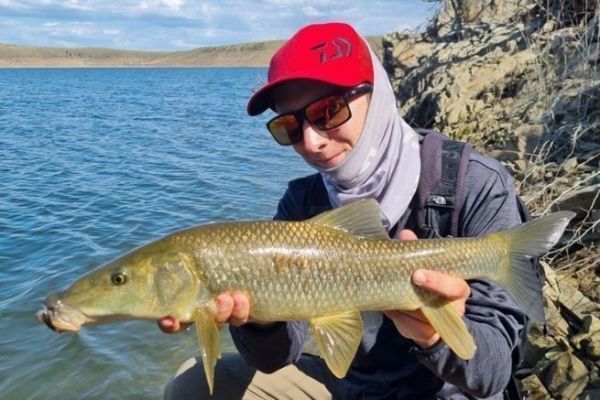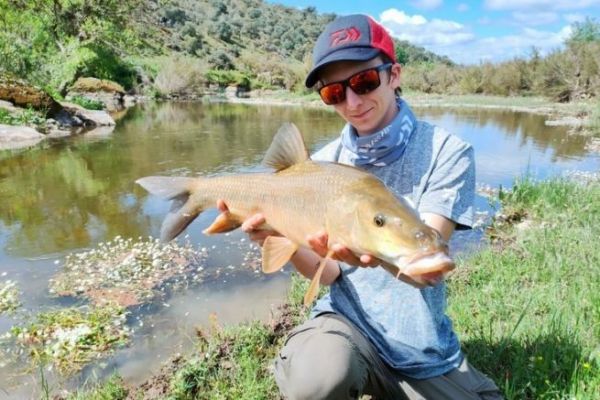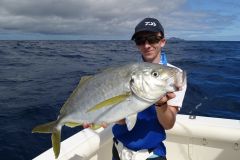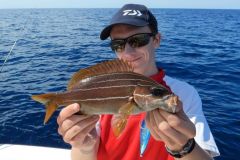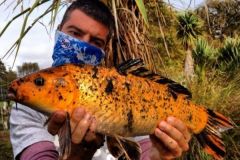The micro popper
The micro popper is undoubtedly the most entertaining technique for fishing comizo barbel. The aim is to imitate a prey item, such as a beetle or grasshopper, falling into the water near the barbel. Obviously, this lure works best when barbels are feeding close to edges or foliage and when outside temperatures are high.
However, the popper requires experience in precise casting, since a cast too far from the fish is synonymous with refusal, while a cast too close can cause the fish to flee. The popper is usually seized by a barbel in a feeding reflex and the fish doesn't even take the time to observe what it's going to eat. This results in very violent attacks after the popper hits the water, the best possible sensation for a sight fisherman.
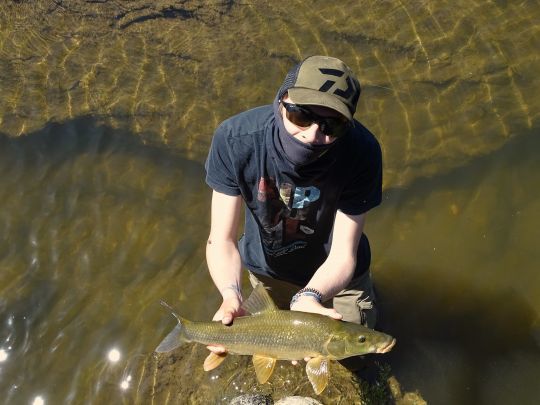
The crankbait
The crankbait is a more versatile lure than the popper, since it can easily be fished below the surface. However, it can be used in the same way as a popper, fishing on impact, if its size is small enough. On the other hand, when barbel are more fastidious, the rapid vibrations of a swimming crankbait more frequently trigger attacks.
The crankbait is also used to fish muddy edges where the presence of small crayfish can attract barbel. A crankbait that taps against the bottom and raises small clouds of silt perfectly imitates a crayfish trying to flee by propelling itself with its tail. In fact, barbels are often seen pacing the edges, lifting small stones slightly to find various invertebrates or juvenile fish.
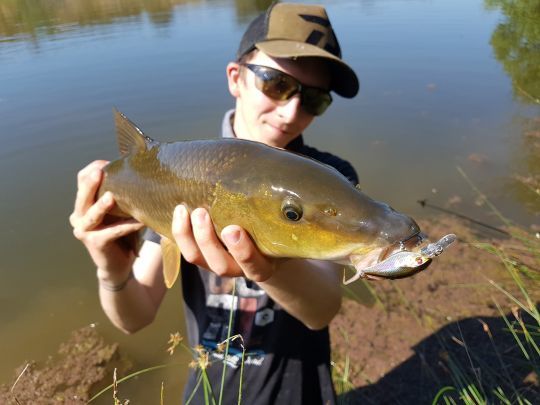
Imitations
Of course, hard lures have several major shortcomings, not least the fact that they can't fish every layer of water. Soft lures have this advantage, depending on the weight of the sinker used. Small crayfish or grasshopper imitations are extremely effective on comizo barbel.
We use them in two different ways, either to fish on impact, with a very light weight so that the noise doesn't scare the fish away, or when the fish are feeding by searching the bottom. Fishing for barbel feeding on the bottom is also sight fishing, but the aim is to pass our soft lure close to the barbel's head while it's feeding on the bottom, without being spotted. We then use heavier lead heads to cast past the fish and bring the lure back in front of its mouth without making a sound.

 /
/ 

